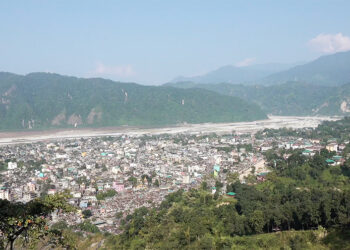 For the people living along Shetihkari and Aieploy streams, flooding especially during the monsoon has become a perennial challenge, despite various mitigation works. However, it is now expected to subside following the interventions through the Technical Report on Flood Hazard Assessment and Development of Climate-resilient measures.
For the people living along Shetihkari and Aieploy streams, flooding especially during the monsoon has become a perennial challenge, despite various mitigation works. However, it is now expected to subside following the interventions through the Technical Report on Flood Hazard Assessment and Development of Climate-resilient measures.
The report was launched recently.
This time, the Ministry of Works and Human Settlement (MoWHS) has come up with a comprehensive report for the situation. Millions of ngultrum have been spent annually for the program but to no avail. The approaches, so to say, have been recurrent.
“A proper study has not been conducted in terms of where the erosion is taking place, where these huge debris sediments are coming from and what makes those structures fall. Because most of the structures there have been either constructed this year and then gets eroded next year. Scouring happens and walls collapse, so not many studies have been conducted in the past,” Tashi Phuntsho, the Executive Engineer of MoWHS, said.
The current technical study is inclusive of detailed hydrological, geotechnical and economic aspects. Following these, the report recommends structural measures such as the construction of a huge sediment trap and structures along the course to control lateral and bed erosions. Recommendations also include plantation of trees at the sources of the rivers.
“Measure we came up after the study will be able to resist flooding along its course and will not impact the human settlement or infrastructure and also the agriculture land. The new infrastructure we propose will be in the right location. We have considered the morphological characteristics of the streams and debris will be controlled upstream,” Tashi Phuntsho added.
The MoWHS developed the report with assistance from the World Bank. It has been handed over to Gelegphu Thromde and the Sarpang dzongkhag for the necessary actions.
Karma Wangdi






